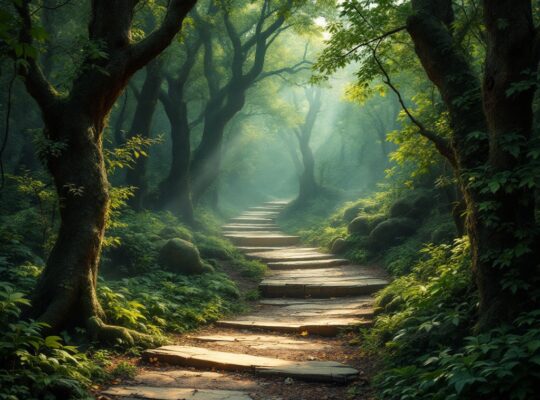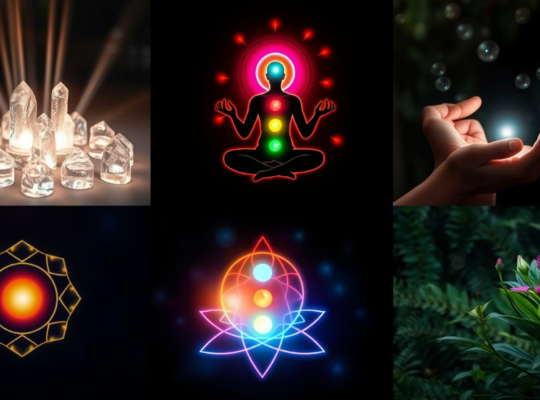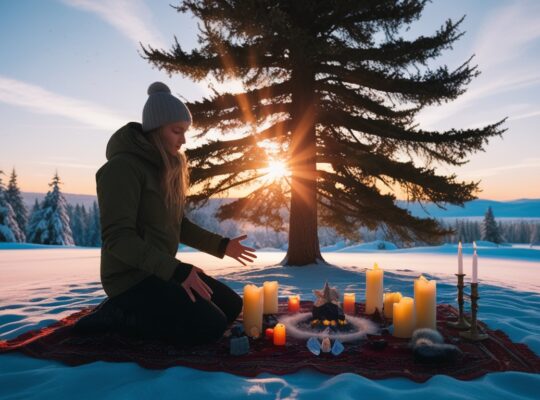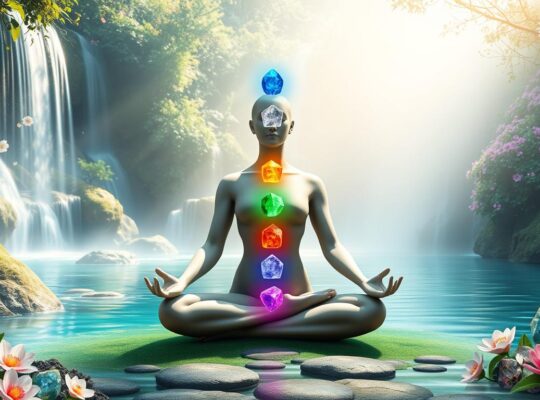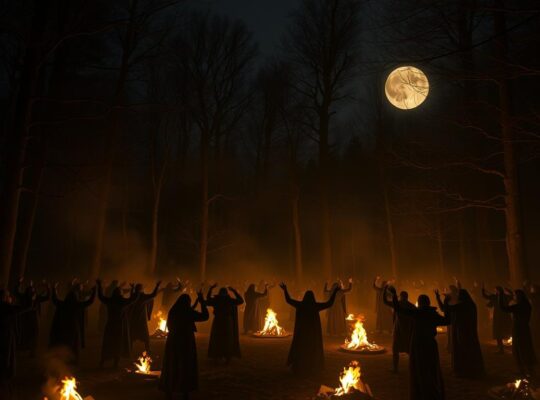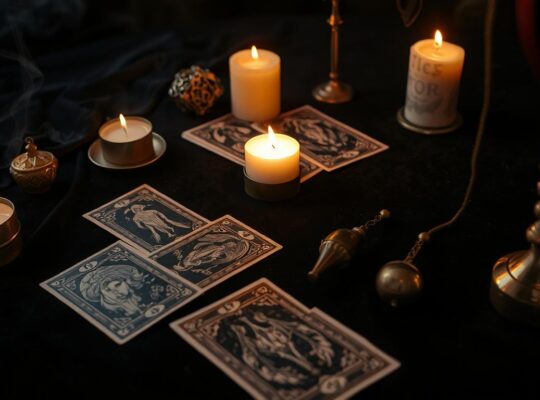Hey there, magical folks! Aurora Stormrider here, ready to take you on a spellbinding journey through the history of witchcraft. Grab your broomsticks (or your favorite reading chair), because we’re about to fly through time and explore how the craft has evolved from ancient mysticism to modern-day practice. Let’s dive in!
Unveiling Historical Mysticism: The Origins of Witchcraft
Picture this: a moonlit clearing in an ancient forest, where wise women and men gather to commune with nature and tap into the unseen forces of the universe. This is where our story begins.
The origins of witchcraft are as misty as a morning fog in Salem. What we do know is that practices we might call “witchcraft” have existed in various forms across cultures for millennia. From the shamans of ancient Siberia to the mystery cults of Greece, people have long sought to understand and influence the world through magical means.
In these early days, witchcraft was often indistinguishable from what we’d now call folk medicine or religious practice. The “witch” of a village might have been its healer, midwife, and spiritual advisor all rolled into one.
Fun fact: The word “witch” comes from the Old English “wicce” (feminine) or “wicca” (masculine), meaning “wise one” or “shaper of the unseen.”
For a deeper dive into the ancient roots of magical practices, check out our article on Unveiling Ancient Mystery: A Journey Into The Oldest Known Magical Traditions.
From Healers to Heretics: Witchcraft in Medieval Times
As we zoom forward to the Middle Ages, we see a dramatic shift in how witchcraft was perceived. What was once a respected, if somewhat feared, set of practices became increasingly demonized.
The medieval period saw the rise of organized religion as a dominant force in Europe. As Christianity spread, local pagan practices were often recast as evil or heretical. The village wise woman, once sought out for her healing knowledge, might now be viewed with suspicion.
This period saw some of the darkest chapters in witchcraft history, including:
- The establishment of the Inquisition in 1231
- The publication of the “Malleus Maleficarum” (Hammer of Witches) in 1486
- The peak of witch hunts in Europe and colonial America between 1580 and 1630
It’s crucial to remember that many of those persecuted as “witches” during this time were innocent victims of paranoia, misogyny, and social upheaval.
The Renaissance of Witchcraft: Rebirth and Rediscovery
As we emerge from the dark ages into the Renaissance, we see a fascinating paradox in attitudes towards witchcraft. On one hand, witch hunts continued and even intensified in some areas. On the other, there was a renewed interest in esoteric knowledge and magical practices among the educated elite.
This period saw the publication of influential texts like Cornelius Agrippa’s “Three Books of Occult Philosophy” (1533), which attempted to reconcile magic with Christianity and classical philosophy.
The witch became a complex figure in the Renaissance imagination – at once feared and fascinating, a symbol of both ignorance and hidden knowledge.
For more on how witchcraft intersected with other esoteric traditions during this period, see our article on Alchemy and Witchcraft: A Renaissance Connection.
The Waning of the Witch Trials: Enlightenment and Rationalism
As the Age of Enlightenment dawned, the flames of the witch hunts began to die down. Rationalism and scientific thinking challenged long-held superstitions, and legal reforms made it harder to prosecute alleged witches.
Key moments in this shift included:
- The repeal of England’s Witchcraft Act in 1736
- The last execution for witchcraft in Europe in 1782 (in Switzerland)
- The Salem Witch Trials becoming a cautionary tale about mass hysteria
However, it’s important to note that belief in witchcraft didn’t disappear overnight. In many rural areas, folk magic practices continued, often blending with Christian beliefs in fascinating ways.
The Modern Witch: Witchcraft in Contemporary Culture
Fast forward to the 20th century, and we see witchcraft undergoing yet another transformation. No longer a terrifying specter or a relic of superstition, the witch emerged as a powerful symbol of feminism, personal empowerment, and connection to nature.
This revival was influenced by several factors:
- The publication of Margaret Murray’s “The Witch-Cult in Western Europe” (1921), which proposed that witchcraft was a surviving pagan religion
- Gerald Gardner’s introduction of Wicca in the 1950s
- The rise of feminist and environmental movements in the 1960s and 70s
Today, witchcraft takes many forms. From traditional Wiccan covens to eclectic solitary practitioners, from kitchen witches to tech witches, the modern magical community is diverse and vibrant.
The Future of the Craft: Witchcraft’s Evolving Identity
So, where is witchcraft headed in the 21st century and beyond? Here are some trends I’m seeing:
- Digital Integration: From online grimoires to virtual covens, technology is changing how we practice and connect.
- Decolonization and Diversity: There’s a growing movement to acknowledge and respect the diverse cultural roots of magical practices.
- Eco-Witchcraft: As environmental concerns grow, many witches are focusing on earth-centered practices and activism.
- Psychological Witchcraft: Some practitioners are blending magical techniques with psychology for personal growth and healing.
- Pop Culture Witchcraft: From “Charmed” to “Chilling Adventures of Sabrina,” witches continue to captivate the public imagination.
One thing’s for sure: witchcraft will continue to evolve, adapting to new knowledge and societal changes while honoring its ancient roots.
The evolution of witchcraft is a testament to the enduring human desire to understand and influence the world around us. From ancient wise women to medieval heretics, from Renaissance mystics to modern-day practitioners, witches have always been at the forefront of challenging societal norms and exploring the boundaries of human potential.
As we move forward, witchcraft continues to offer a path for personal empowerment, connection with nature, and exploration of the mysteries of existence. Whether you’re a seasoned practitioner or just curious about the craft, remember that you’re part of a long and fascinating history.
So, my fellow magical adventurers, how will you write the next chapter in the evolution of witchcraft? The cauldron of possibility is bubbling – what will you brew?
Until next time, wishing you magical journeys through past, present, and future!

FAQs
Q: Is witchcraft a religion?
A: It can be, but not always. Some forms of witchcraft, like Wicca, are recognized religions. Others consider it a spiritual practice or simply a set of techniques.
Q: Do all witches cast spells?
A: Not necessarily. While spellcasting is a common practice, some witches focus more on meditation, energy work, or connecting with nature.
Q: Is witchcraft only for women?
A: Absolutely not! People of all genders can be witches. While some traditions focus on feminine energy, many are open to all.


